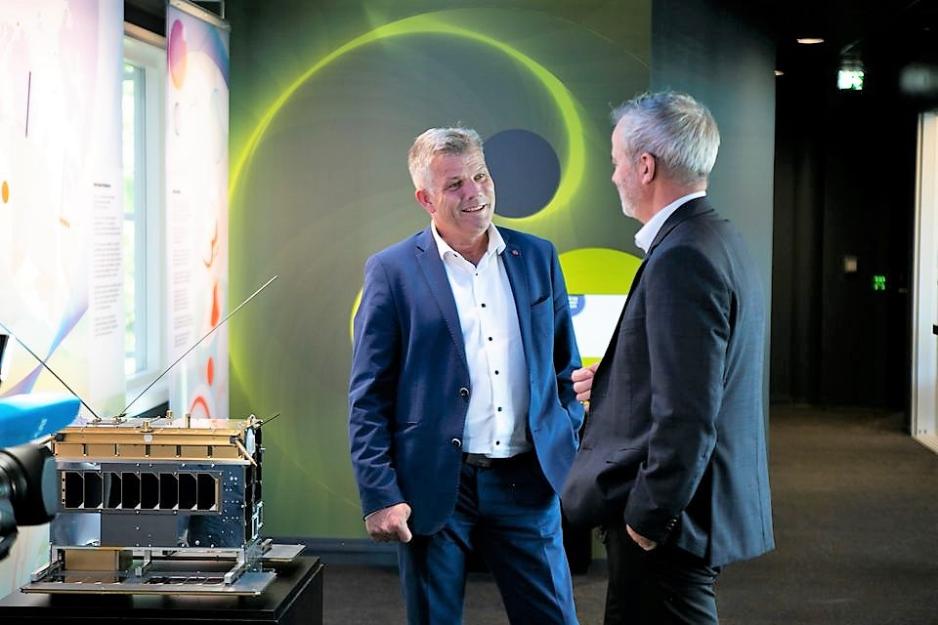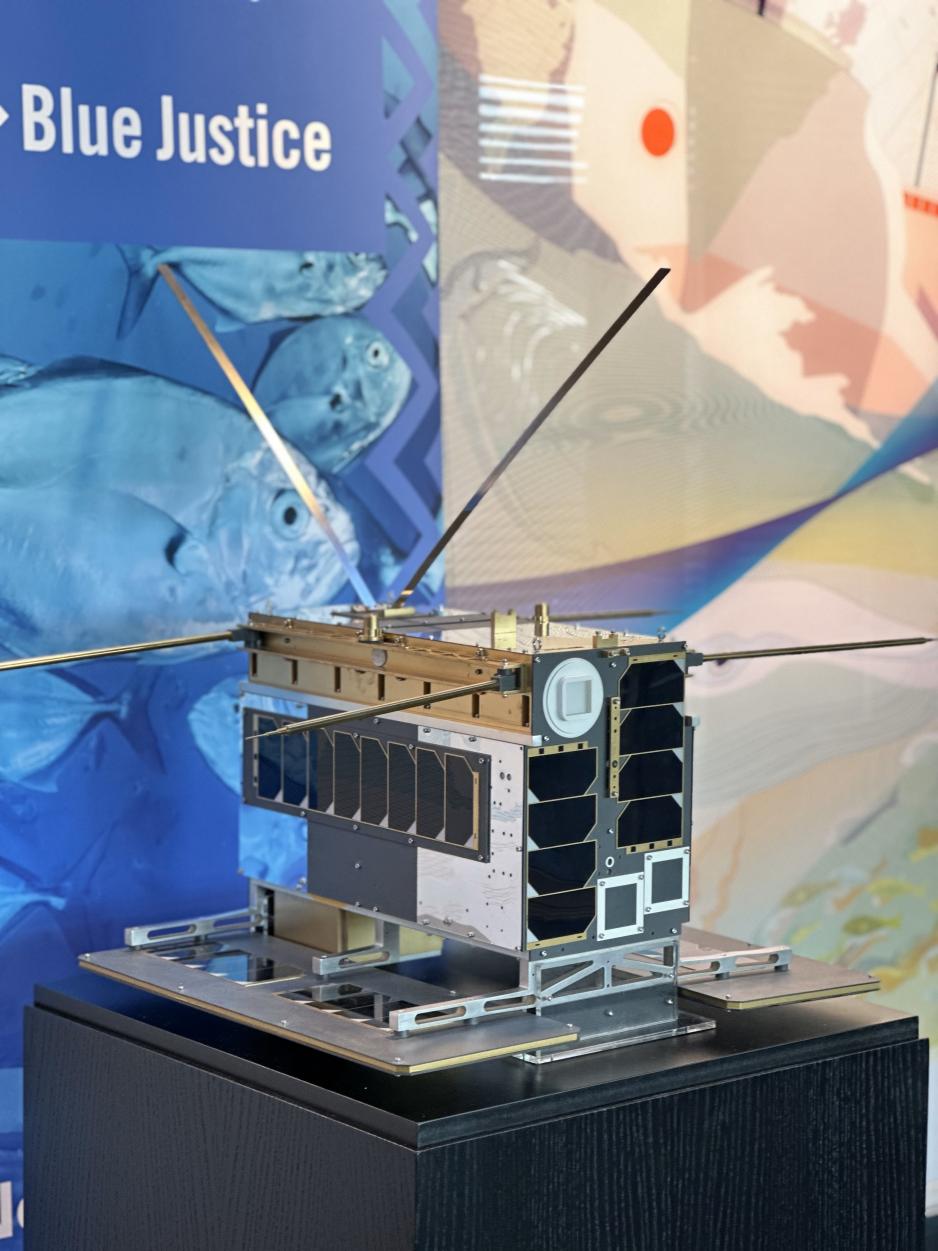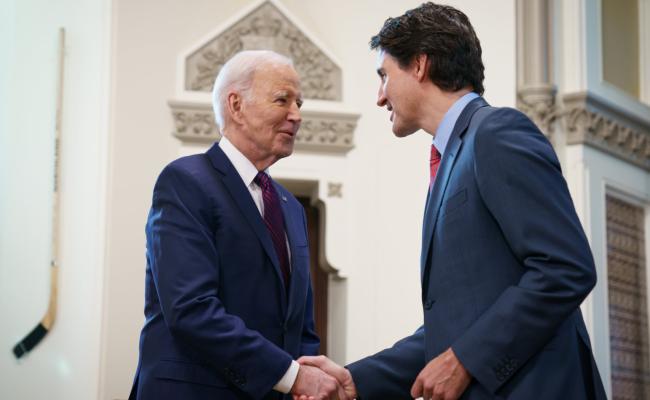Norwegian Satellites to Uncover Unregulated Fishery

Minister of Fisheries and Ocean Policy Bjørnar Selnes Skjæran (Labor) and Director of the Norwegian Space Agency, Christian Hauglie-Hansse, by the satellite which will monitor global fishery crime. (Photo: the Norwegian Ministry of Trade, Industry, and Fisheries)
The Norwegian government is launching a global ocean surveillance program against fisheries crime. Over a third of all the world's coastal states are to have access to satellite data and expertise from Norway, which can be used to monitor their sea areas and uncover fisheries crime.
"This is bordercrossing organized economic crime, which drains the oceans for billions worth. Fishery crime threatens the ecosystems and the sustainability of the ocean and drains local communities for workplaces and values," says Minister of Fisheries and Ocean Policy Bjørnar Skjæran (Labor) in a press release from the Norwegian Ministry of Trade, Industry, and Fisheries.
He says the fight against illegal fishery is important to an ocean state like Norway.
"We now share Norwegian technology and expertise with many other countries to deal with the problem."
Free of charge
Norway will use the Automatic Identification System (AIS) to share data from Norwegian satellites with the other countries participating in the project, which has been named the "Blue Justice Community."
The countries will receive the information for free and can, therefore, conduct their own analyses and uncover fishery crime. They are also offered free support from the Norwegian tracking unit in Vardø, which is staffed with analysts from the Norwegian Coastal Administration and the Directorate of Fisheries.
"Fighting fishery crime is essential to develop sustainable and just sea economies in developing countries, and the monitoring of fishing vessels can be a crucial tool for these countries," says Anne Beathe Tvinnereim (Center), Norwegian Minister of International Development.
Important for the UN
The new sea surveillance program was developed by the Coastal Administration's BarentsWatch and the Norwegian Space Agency.
Norway is already funding a project against fishery crime under the UN's development program. The "Blue Justice Community" will be a contribution to this work.
"Norway, and not least the Nordic region, is a region which has much to offer the global south," says Ulrika Modeèr, UN Assistant Secretary-General and Director of the Bureau of External Relations and Advocacy.
She believes that the Norwegian initiative's unique aspect is combining state expertise with digitalization and data sharing.
"This is essential for the UN in our work to achieve the sustainability goals," states Modeèr.
Facts about the "Blue Justice" initative
Norway initiated a Nordic ministerial declaration against fisheries crime in 2017 when Norway was the chair of the Nordic Council of Ministers.
In 2018, Norway initiated an international declaration against fisheries crime. It was first signed by nine coastal nations.
Today, the international declaration against fisheries crime is supported by 61 countries. That is nearly 37% of the world's coastal states. Most of these are developing countries, which will especially benefit from the new program.
In 2019, Norway started the "Blue Justice" initiative. The initiative is to support countries in the work against fisheries crime internationally.
The development-oriented activities of the initiative are primarily followed up by the Nordic office of the United Nations Development Program (UNDP), which has offices in Oslo.
The "Blue Justice" initiative's tracking center is co-located with the joint analysis unit between the Directorate of Fisheries and the Coastal Administration at the Vardø traffic center.
The collaboration will be carried out through an international vessel tracking center established in Vardø in 2021 and through a digital platform developed in Norway and administered by the UN through UNDP. The digital platform will ensure secure state-to-state cooperation against fisheries crime.
Source: The Norwegian Government
This is AIS:
AIS stands for automatic identification system.
Vessels with an AIS transponder on board send out dynamic information about their identity, speed, and course to approaching ships via the VHF band and receive corresponding information from ships in the vicinity.
It was first established as an anti-collision tool for the shipping industry.
For ships, AIS information is a supplement to radar-based information.
The world's first microsatellite with AIS technology was developed in Norway and was launched from India in 2010.
Today, Norway has several microsatellites in orbit around the Earth, and new ones are under development.
The Norwegian satellites collect around 2.1 billion tracking signals (AIS) from all over the world every year.
Source: The Norwegian Government
Also read
This article was originally published in Norwegian and has been translated by Birgitte Annie Molid Martinussen.



